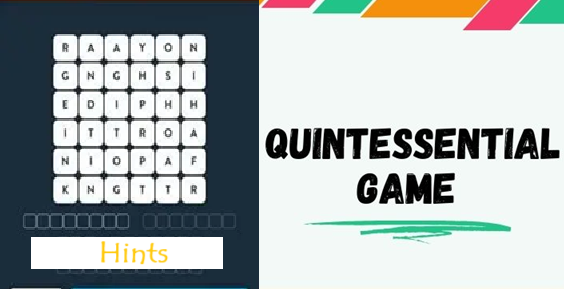
The arena of esports is perhaps one of the most dynamic, and the difference between winning and losing depends on top-notch game strategy. Whether they be MOBA, FPS, battle royale, or RTS, strategy, teamwork, and awareness of the meta will govern the game. This guide will thoroughly inform you about the most useful strategies to prevail in this competitive sphere of the industry.
Understanding the Core Mechanics of Esports Strategy
Understanding the basic mechanics of the games we play in esports is the first step toward success. Every genre acts differently in sourcing different skill sets and strategic frameworks:
MOBA (Multiplayer Online Battle Arena): Strategic lane control is vital as well as resource control and execution in the teamfight.
FPS (First Person Shooter): Map awareness undertakes all communication and is based on different roles working together.
Battle Royale: The point lies on longevity, position mainstream adaptation, and prize control.
RTS (Real-Time Strategy): It is macro-management; invest resources in it and micro in engagements.
Mastery begins here, where one comprehends the fundamentals and can employ them in counter-action against one’s opponents.
Meta Game Mastery: Adapting to the Ever-Changing Competitive Landscape
However, when it comes to the use of the word “meta,” it is actually the best word you would know when it comes to the most efficient and effective approaches that can be used for competitive games. Competitive games will always have new stuff coming in due to balance patches and the trends created from time to time. Follow the meta by :
Watching professional matches to glean things like trends and strategies.
Joining the conversation about the games on forums, subreddits, and Discord servers.
Changing practice regimens to be “meta friendly” say with changes in champion pool in a MOBA or weapon preferences in an FPS.
However, we remain adaptable and flexible i. e. evolve with the latest meta in order to stay a step ahead of the rest.
Team Communication: The Bedrock of High-Level Play
There is no way credible communication will result in the successful execution of a strategy. Esports are the world’s most joint efforts in gaming, especially where titles like Valorant, League of Legends, and Dota 2 come in. Major practices include:
Shot-calling hierarchy: Assign a primary in-game leader (IGL) or choose one to deliver less confusion in decision-making.
Consistent callouts: Standard map and objective callouts.
Nonverbal communicating: Master the ping systems and quick chat tools for immediate reactions.
Communication in training should not be limited to gameplay but also in scrimmages and practice sessions.
Map Control and Objective Timing: The Strategic Advantage
In a fair number of esports titles, both map control and timing for objectives influence the game tempo. The prerequisites for winning include:
Map Awareness: A continual assessment of where the enemies are, where they could go, and where ambushes could be set.
Zone Denial and Vision Control: Using wards, drones, smokes, and utility to limit enemy movement.
Objective Management: The precise timing for team synchronization of power-ups, boss fights, bomb plant/defusal, or dragon/baron kills.
Map control is equivalent to battlefield control—it opens up a greater number of strategies for you while leaving your opponents playing defensively.
Role Specialization: Understanding and Enhancing Individual Contributions
Every player should master their specialty. A team cannot make progress when its members, from support who peels for carries in MOBAs to the entry fragger in FPS, fail to fulfill their roles. Improvement strategies include:
- Review personal VODs to analyze one’s decision-making and execution.
- Role-specific drills to hone core mechanics (e.g., flick shots for duelists, zoning skillshots for support).
- Build synergy with the adjacent roles (like mid-jungle or tank-support duos).
- Consistency in playing a role makes a team better in its strategies and team play.
Data-Driven Improvement: Leveraging Analytics for Strategy Refinement
Up until now, it has been taught on the basis of data only, and data analysis has been practically neglected in the skill area. The players and teams analyze:
- Player movements’ heatmaps.
- KDA ratios, damage per minute, and win/loss patterns according to possible draft or map side.
- Tendencies of the opponent: preferred routes or timing of abilities.
The aforementioned analysis involves websites like Tracker.gg, Mobalytics, and Blitz.gg. Thus, we need to learn from science about developing ourselves.
Training Regimen and Scrim Structure: Turning Strategy into Habit
An effective strategy only becomes such when it is reliably executed, which is made through organized practice: Scrims with feedback loops, not merely playing but reviewing and adjusting. Micro and macro training sessions, focusing separately on mechanical skill and strategic decision-making. Mental conditioning drills such as tilt control, focus enhancement, and stress resilience. All this, comes together eventually, as discipline in preparation breeds confidence in executing on the day of the game.
Drafting and Loadouts: Crafting the Perfect Start
The match begins in the drafting phase (MOBA, FPS) or loadout selection (like Apex Legends or Call of Duty). Strategic Selecting:
Banning targets from use by the opposing side based on their favourite heroes.
Counterpicking: Pick the hero who would exploit the well-known weakness of an enemy.
Synergy: Combination of elements (dive comps, poke comps, utility-focused plays).
The strategy begins in the lobby. Winning there sets us up for success in the game itself.
Adaptation in Real-Time: Mid-Game Adjustments That Win Matches
Esports is fluid, and static strategies often fall short. We must cultivate the ability to:
- Recognize win conditions as they evolve.
- Adjust rotations, item builds, or engagement strategies based on the opponent’s performance.
- Reassign team roles temporarily, such as turning a support into a second carry during late-game scaling.
Winning teams are those that think on their feet without losing cohesion.
Mental Fortitude and Leadership: The Psychology Behind Elite Performance
Beyond mechanics and tactics lies the mental game. Strong mental frameworks include:
- Leadership structure to maintain morale and resolve internal conflicts.
- Mental resilience training to deal with pressure, especially in tournaments or qualifiers.
- Confidence building routines like visualization, routine warmups, and breathing exercises.
A calm, focused team with strong leadership will outperform even mechanically superior opponents who lack emotional control.
Esports Strategy by Genre: Tailoring Your Tactics
MOBA Strategies
- Focus on wave management, jungle tracking, and objective timers.
- Use power spikes and item completions to dictate engagements.
FPS Strategies
- Entry-clear protocols, utility timing (flash, smoke), and bombsite control.
- Economy management and buy round strategies.
Battle Royale Strategies
- Circle prediction, early vs late drop theory, and third-party avoidance.
- Inventory optimization and team positioning dynamics.
RTS Strategies
- Build order optimization, fog of war manipulation, and unit composition counters.
Each genre and title demands bespoke strategic frameworks, but the foundation remains the same: discipline, data, and execution.
Conclusion: Strategy is the Key to Esports Greatness
To rise through the ranks of competitive gaming, we must move beyond basic skill and embrace elite-level strategic thinking. With precise preparation, deep understanding of meta mechanics, superior communication, and relentless refinement, we can dominate the battlefield in any esports title we pursue.
Also Read: CreativeGaming : Guide to Official Email & other Channels



